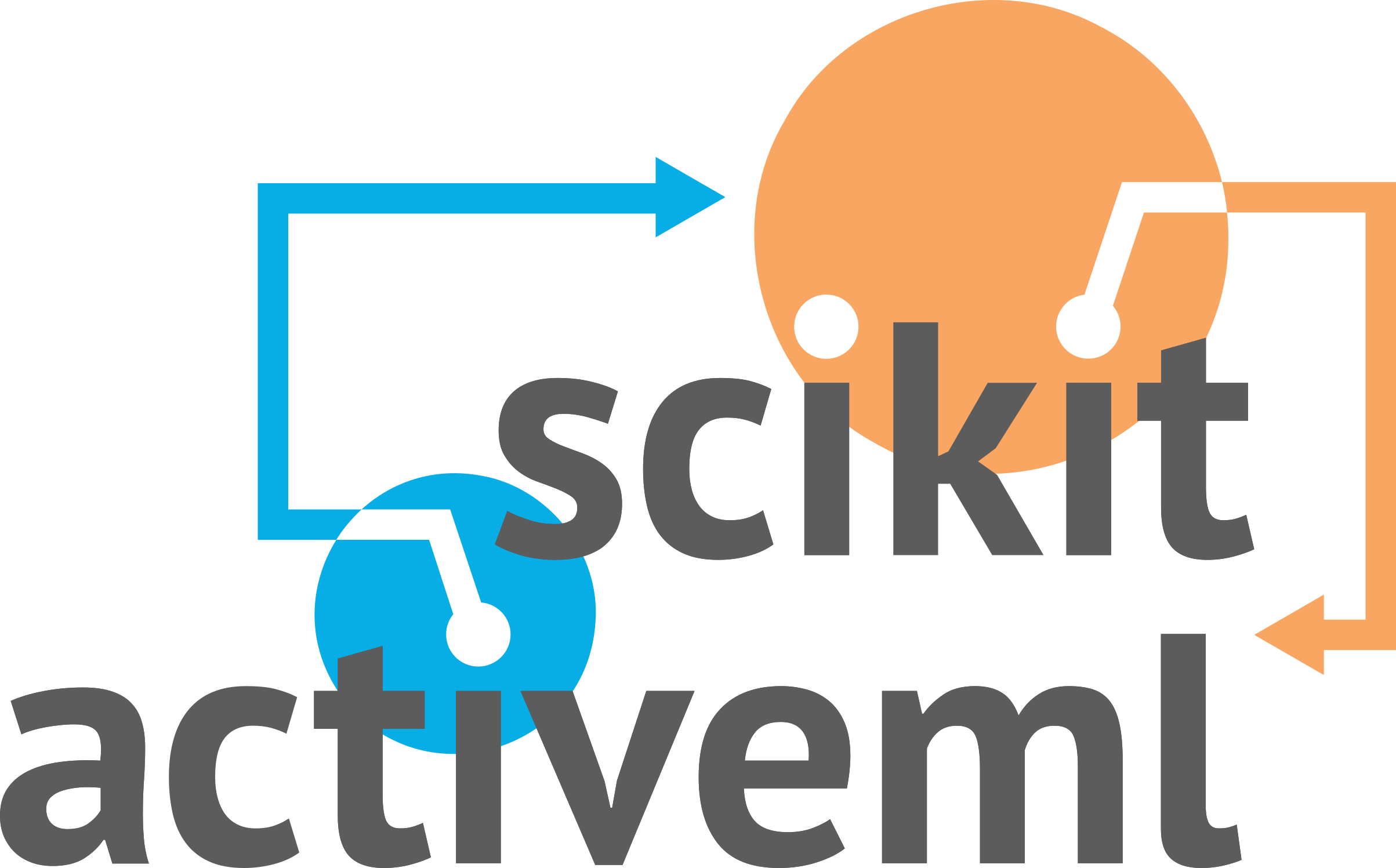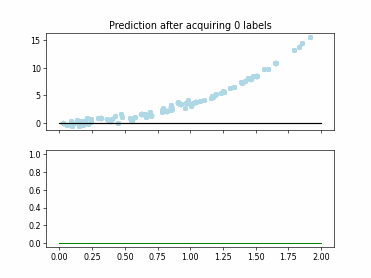ExpectedModelChangeMaximization#
- class skactiveml.pool.ExpectedModelChangeMaximization(bootstrap_size=3, n_train=0.5, ord=2, feature_map=None, missing_label=nan, random_state=None)[source]#
Bases:
SingleAnnotatorPoolQueryStrategyExpected Model Change (EMC)
This class implements “Expected Model Change” (EMC) [1], an active learning query strategy designed for linear regression. It chooses those samples that have a maximal expected gradient length with respect to the model parameters. While designed for a linear regressor the formulas obtained from the linear case can be applied to arbitrary regressors.
- Parameters:
- bootstrap_sizeint, default=3
The number of bootstraps used to estimate the true model.
- n_trainint or float, default=0.5
The size of a bootstrap compared to the training data if of type float. Must lie in the range of (0, 1]. The total size of a bootstrap if of type int. Must be greater or equal to 1.
- ordint or string, default=2
The norm to measure the gradient length. Argument will be passed to np.linalg.norm.
- feature_mapcallable, default=None
A feature map used to calculate the gradient of the regressor under the assumption that the regressor is linear. Takes in the feature data. Must output a np.array of dimension 2. The default value is the identity function. An example feature map is sklearn.preprocessing.PolynomialFeatures().fit_transform.
- missing_labelscalar or string or np.nan or None, default=np.nan
Value to represent a missing label.
- random_stateint or np.random.RandomState or None, default=None
Random state for candidate selection.
References
[1]Cai, Wenbin, Ya Zhang, and Jun Zhou. Maximizing expected model change for active learning in regression, IEEE International Conference on Data Mining, pages 51–60, 2013.
Methods
Get metadata routing of this object.
get_params([deep])Get parameters for this estimator.
query(X, y, reg[, fit_reg, sample_weight, ...])Determines for which candidate samples labels are to be queried.
set_params(**params)Set the parameters of this estimator.
- get_metadata_routing()#
Get metadata routing of this object.
Please check User Guide on how the routing mechanism works.
- Returns:
- routingMetadataRequest
A
MetadataRequestencapsulating routing information.
- get_params(deep=True)#
Get parameters for this estimator.
- Parameters:
- deepbool, default=True
If True, will return the parameters for this estimator and contained subobjects that are estimators.
- Returns:
- paramsdict
Parameter names mapped to their values.
- query(X, y, reg, fit_reg=True, sample_weight=None, candidates=None, batch_size=1, return_utilities=False)[source]#
Determines for which candidate samples labels are to be queried.
- Parameters:
- Xarray-like of shape (n_samples, n_features)
Training data set, usually complete, i.e., including the labeled and unlabeled samples.
- yarray-like of shape (n_samples,)
Labels of the training data set (possibly including unlabeled ones indicated by self.missing_label).
- regSkactivemlRegressor
Regressor to predict the data. The query strategy is designed for linear regressors, but the formulas are applicable to any regressor.
- fit_regbool, default=True
Defines whether the regressor should be fitted on X, y, and sample_weight.
- sample_weightarray-like of shape (n_samples,), default=None
Weights of training samples in X.
- candidatesNone or array-like of shape (n_candidates), dtype=int or array-like of shape (n_candidates, n_features), default=None
If candidates is None, the unlabeled samples from (X,y) are considered as candidates.
If candidates is of shape (n_candidates,) and of type int, candidates is considered as the indices of the samples in (X,y).
If candidates is of shape (n_candidates, …), candidates is considered as the candidate samples in (X,y).
- batch_sizeint, default=1
The number of samples to be selected in one AL cycle.
- return_utilitiesbool, default=False
If true, also return the utilities based on the query strategy.
- Returns:
- query_indicesnumpy.ndarray of shape (batch_size)
The query indices indicate for which candidate sample a label is to be queried, e.g., query_indices[0] indicates the first selected sample.
If candidates is None or of shape (n_candidates,), the indexing refers to the samples in X.
If candidates is of shape (n_candidates, n_features), the indexing refers to the samples in candidates.
- utilitiesnumpy.ndarray of shape (batch_size, n_samples)
The utilities of samples after each selected sample of the batch, e.g., utilities[0] indicates the utilities used for selecting the first sample (with index query_indices[0]) of the batch. Utilities for labeled samples will be set to np.nan.
If candidates is None, the indexing refers to the samples in X.
If candidates is of shape (n_candidates,) and of type int, utilities refers to the samples in X.
If candidates is of shape (n_candidates, …), utilities refers to the indexing in candidates.
- set_params(**params)#
Set the parameters of this estimator.
The method works on simple estimators as well as on nested objects (such as
Pipeline). The latter have parameters of the form<component>__<parameter>so that it’s possible to update each component of a nested object.- Parameters:
- **paramsdict
Estimator parameters.
- Returns:
- selfestimator instance
Estimator instance.

